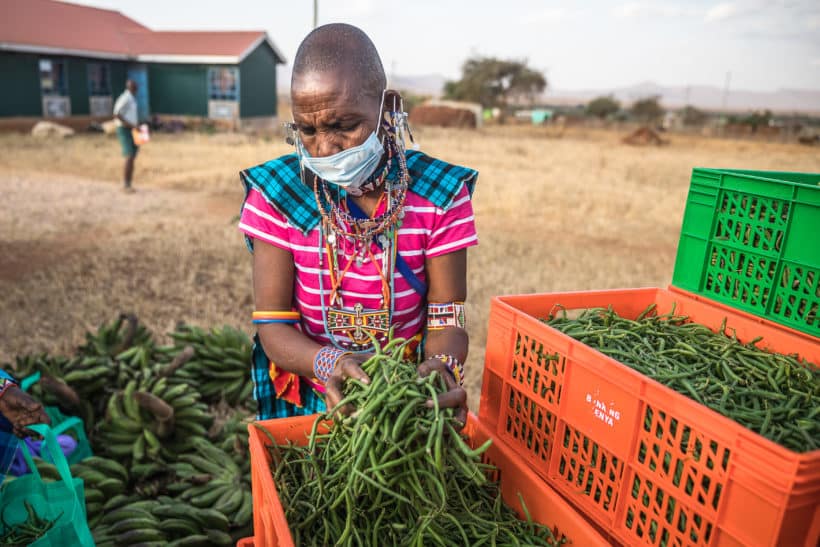
The Maasai people of Kenya’s Great Rift Valley are some of Africa’s most well-known and culturally distinctive tribal peoples. Traditionally nomadic and pastoralist, the Maasai are self-sufficient, thriving from the production of their livestock and living off the lands they call home.
Yet, when this land fails, due to climate stress and persistent drought rendering swathes of pastureland unviable for the grazing of livestock, the specter of hunger and deprivation follows close behind. However, for many of the Maasai, relief has come from what some might consider an unexpected source: food banks.
Traversing inaccessible terrain and the interference of wild elephants, the refrigerated trucks of Food Banking Kenya are able to overcome numerous obstacles with the support of local government guides. And by working with local churches and other institutions, the food bank can distribute much-needed food to the peripatetic Maasai, before they move on to pastures anew.
From maize and rice to fresh fruits and vegetables, the food provided offers immediate relief from the rising insecurities facing communities like the Maasai. Yet, much of the food that eventually reaches this community was not originally grown for this purpose.
Instead, it is largely sourced from many of Kenya’s farms, which experience around 40 per cent of their production ending up wasted, largely post-harvest. Juxtapose this against the reality that a similar percentage of Kenyans face food insecurity every day, and it becomes more apparent that food banks can play an important role in addressing both issues through food redistribution.
Africa’s food banks can bridge the gap between farms with surplus food and communities without. But, although Food Banking Kenya’s Agricultural Recovery Programme prevented over 400,000 kilograms of fresh fruits and vegetables going to waste on the country’s farms in 2021, more effective support is needed to truly make a dent in Africa’s mountain of food waste.
This is because the dual climate and hunger challenges facing the Maasai are not unique to their community alone, but are symptomatic of the rising burden being placed on Africa’s already strained food systems.
The continent, like many parts of the world, suffers not from a lack of food – but a lack of connectivity between the food it produces, and its most vulnerable communities.
Organizations which can bridge this gap, like food banks, are not yet fully understood or appreciated by governments, leaving much unfulfilled potential. Meanwhile, reducing food waste also helps minimize the agricultural sector’s carbon footprint, as it alone is responsible for up to 8 per cent of global greenhouse gas emissions.
With greater support, Africa’s emerging food bank sector can help address rising continental food insecurity, which is exacerbated by climate change and global economic shocks.
That’s why following COP27 – recognized as ‘Africa’s COP’ – both African and global leaders must begin to fully recognize and support the role of food banks in addressing the intertwined climate and hunger crisis.
To begin with, this means adopting policies that better support food donation and distribution and the role food banks play in delivering greater nutritional security, climate change mitigation, and adaptation, across the continent. Many food producers, in Kenya and across Africa, produce a surplus of food but face barriers when preventing this from going to waste if it is not possible to sell to markets.
Better policies, as highlighted by the Global Food Donation Policy Atlas, such as tax incentives and liability protection for food donors, must be adopted to prevent food waste and feed communities, alongside building awareness for food banks’ role in reducing food waste across the entire food value chain.
Secondly, with the rising impact of climate change on our food systems in mind, African governments must recognize the importance of strategically including food banks in their national climate action plans, known as Nationally Determined Contributions (NDCs).
Finally, the continent’s leaders must understand and support a broader role for food banks in the functioning of Africa’s food systems. For instance, because of Food Banking Kenya’s school feeding program, more than 7,000 Kenyan children are not only receiving nutritious diets, but are also supported to stay in school and receive an invaluable education.
Far from being just a port of last resort, food banks now stand ready to serve Africa at the nexus of two of the continent’s greatest challenges – the increasing impact of climate change and rising levels of hunger.

